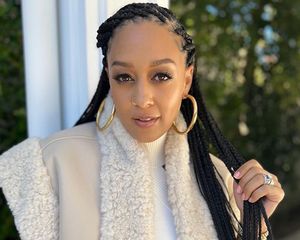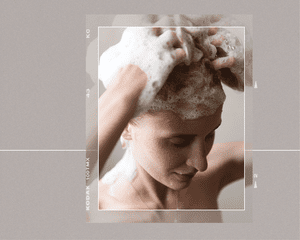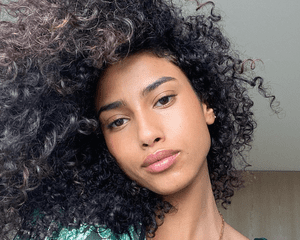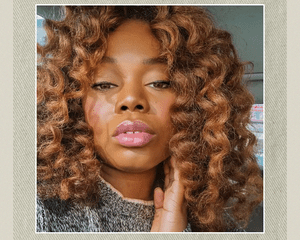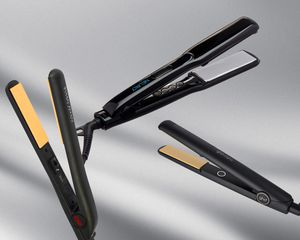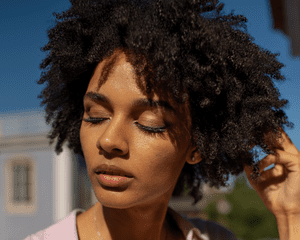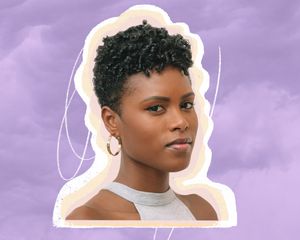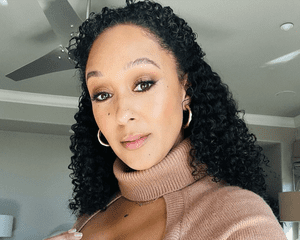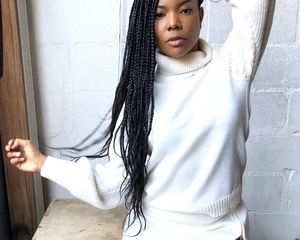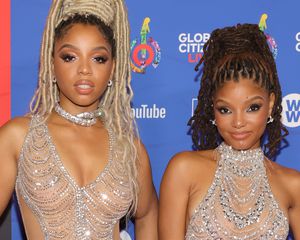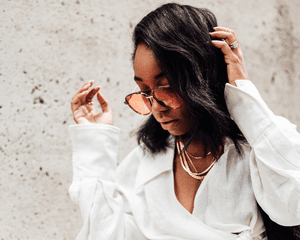:max_bytes(150000):strip_icc()/kerrywashingtoncoils-2a24c5e078aa41bb90bdda0ceb1fe297.jpg)
@kerrywashington
Whether you’ve recently embarked on a natural hair journey or have been embracing your coils for years, learning about the ins and outs of your hair is key for a thriving, bouncy mane. This includes identifying your porosity, density, and, for many, your hair type. While all type 4 hair is tightly coiled, there are nuances when it comes to how to care for each specific subtype.
We asked hairstylists Charlotte Mensah and Lacy Redway; trichologist Enitan Agidee; and Jeanette Nkwate of the natural hair care brand Afrocenchix to help us break down everything there is to know about type 4A hair, specifically, including how to identify it, how to care for it, and what to use on it. Keep reading to find out what they had to share.
Meet the Expert
- Charlotte Mensah is an award-winning hairstylist and author with more than 30 years of industry experience. She is the founder of Manketti Oil and the author of Good Hair.
- Enitan Agidee is an accredited trichologist and the founder of Healthy Hair Studio.
- Jeanette Nkwate is a content, community, and communications manager for the award-winning hair brand Afrocenchix.
- Lacy Redway is a celebrity and fashion hairstylist based in New York City. Her clients include Tessa Thompson, Serena Williams, and Zazie Beetz.
What Is Type 4A Hair?
The key to identifying type 4A hair is its curl pattern. "Type 4A has a defined curl pattern, almost like an S-shape. It retains moisture well, but as with most curly hair types, can still be prone to dryness," says Mensah. She explains that curl types are a good blueprint for figuring out your routine, as some people like to use curl types to figure out how to best enhance their texture with the right products.
"4A hair has an even voluminosity across the head and grows up and out," explains Mensah. (Though Adigee disagrees, stating "most 4A hair tends to fall downwards as it grows out of the scalp rather than grow upwards in an afro-like shape.") Adigee adds that 4A hair doesn’t shrink as fast as other coily hair types, nor will it tangle or knot as easily. "It also tends to reflect light better and may not look as dull on the surface."
When creating a hair care routine for 4A hair, it’s important to not take a 'one-routine-fits-all' approach. "Type 4A hair holds unique information that can’t be found on another person with the same hair type," says Agidee.
Differentiating Between 4A and Other Hair Types
Although curly and coily hair may look similar to many, they certainly differ in their structure. To understand the difference between 4A hair and other hair types, developing some knowledge of the typing system may be useful. "The numbers in the typing system refer to the curl families whilst the letter (from A to C) points to how tightly wound your curls are within that," says Mensah. She goes on to explain that a person with type 1 hair would have no curl pattern and type 2 hair tends to be wavy. Type 3 hair tends to consist of spiraled curls and type 4 hair is kinky and coily in appearance.
Some of the hair types that are similar to type 4A hair are types 3C, 4B, and 4C. 3C hair consists of tight, well-defined curls. "3C curls are often described as corkscrew but when stretched, they can be as long as an average size pencil," says Redway. Redway adds that 3C is very easy to style compared to other types.
As for 4C hair, it has no defined curl pattern, and coils are usually defined by styles such as twisting or braiding. "This hair type is also prone to shrinkage (70 percent or more)," says Mensah. "The hair could be ten inches long but look like it is about three inches long instead. It is the most fragile hair type." Redway adds that the curl definition on 4C hair can only be seen when the hair is wet. 4C hair also requires a lot of moisture. 4B hair and 4C hair have many similarities; the only thing that really differs between the two is "the density and coarseness," says Mensah. 4B hair has a Z-shape and a less definitive curl pattern and, according to Mensah, "can lose its shape if it is over-manipulated."
How Should You Care for Type 4A Hair?
Like other hair types, 4A hair requires a routine that works for you, consistency, and patience in order to flourish. We asked our experts to share tips on how to get the best out of 4A hair.
Moisturize Regularly
All hair types require a significant amount of moisture—especially when styling or detangling is involved—and 4A hair is no exception. To prevent hair from drying out, Mensah recommends applying a good hydrating product. "Afro and curly hair need additional moisture on a regular basis; just don’t overload the hair with the product. Less is more." According to Nkwate, the main reason afro hair breaks is a lack of moisture. "Protecting your hair by locking in moisture is key," she says.
Use Sulfate-Free Shampoo
Sulfate-free shampoo is said to be better for type 4A hair, but Agidee shares that not all sulfate-free shampoos are moisture-rich. "When using a sulfate-free shampoo, make sure it leaves your hair feeling rich in moisture," she explains. Redway recommends Dove's Amplified Textures Hydrating Cleanse Shampoo, which removes product build-up while nourishing the curls and restoring shine and moisture.
Keep Your Scalp Healthy
Scalp health is also really important for type 4A hair. Nkwate recommends washing the scalp every 7-10 days with a gentle sulfate-free shampoo, like Afrocenchix's Swish Sulfate-free Shampoo. "Focus on massaging the shampoo into your scalp with gentle circular movements," she says. "This will help remove dirt and encourage blood flow to the scalp."
Minimize Your Heat Usage
There are endless benefits to using less heat as part of your hair care routine, including minimal breakage, increased shine, and hair that’s softer in texture. That being said, some 4A hair types may find that their hair thrives when using heat. If you need to use heat on your hair, the best thing you can do is protect your hair beforehand. Enitan explains that less heat doesn’t mean better results. "Using heat responsibly is key," she says. "Someone can use heat once every three years and still experience hair damage."
Nkwate adds that heat will always cause some damage but its effects can be minimized. Products filled with ingredients like silicones may be able to reverse heat damage on 4A hair.
Be Careful With Hairstyles That Add Tension
Hairstyles that add tension to the roots of the scalp should be applied with care—especially braids, which shouldn’t be kept in for longer than six to eight weeks. "Braids are an excellent way to protect your hair for a while but you have to let your hair be free. Keeping any protective style in for more than six weeks can be stressful on the hair," says Mensah. Scalp tension is probably one of the biggest hair issues experienced by afro hair types. In addition to hair loss or traction alopecia, protective styles that repeatedly add tension to the scalp can also cause irritation as well as an itchy scalp.
Something else to keep in mind about protective styling is that you will need to maintain your hair on a daily/weekly basis. "Leaving your braids or weave in without any maintenance is counterproductive to wearing a protective style," says Nkwate.
Handle Your Hair With TLC
For many years, afro/kinky/curly hair was deemed unruly and difficult to manage. But now, it is easier than ever before to give your hair what it needs without tugging or pulling it excessively. Nkwate’s advice to anyone with 4A hair is to look at their hands before handling their hair. "Remove your rings and inspect your nails. If they are chipped or broken, I would recommend getting a manicure a day before wash day," she says. She also recommends ditching accessories such as bobby pins and hair bands with metal and plastic fastenings as they can lead to breakage.
Type 4A hair will need to be detangled on a regular basis. For best results, always start from the bottom up, which allows you to "gently detangle any knots, rather than yanking your way through with a comb or brush," says Mensah.
Sleep On a Satin Pillowcase
Cotton may be good for clothing, but it can potentially rob your hair of all the moisture you have been locking in as it is "super absorbent," says Nkwate. Sleeping on a satin pillowcase will help retain moisture in 4A hair. Alternatively, hair can be wrapped with a silk scarf or bonnet. Introducing silk or satin into your hair care routine may even improve its manageability. You’ll be less likely to resort to heated appliances and extra products "because your hair will already be hydrated," says Mensah.
The Best Hairstyles and Cuts for 4A Hair
When deciding how to style and cut type 4A hair, it’s important to "find the styles and routines that work best for you," says Redway; she recommends styles such as twists, Bantu knots, and braids for 4A hair. Most afro hair types are really versatile, however, too much manipulation could damage hair. "If you want to grow your hair, minimizing manipulation should be your top priority," says Nkwate. "Protective styles can definitely help with this as they keep your ends tucked away. A bonus is that you can use your own hair or extensions."
When it comes to cuts, 4A hair types should focus on layering. Layering allows for "more volume and movement," says Redway, and "instantly opens up the face." Mensah recommends regular trims for 4A hair, "ideally every six to eight weeks." Redway adds that fresh trims always make 4A curls appear healthier and more defined.
The Best Products for Type 4A Hair
Finding the right products for 4A hair doesn’t have to be difficult. "Anyone who wants to get the best out of their type 4A hair should find brands they trust and read ingredient lists," says Nkwate. She recommends the Afrocenchix Full Set, which is perfect for anyone who is embarking on a natural hair journey. All products in the range are formulated to keep hair moisturized while limiting breakage.
Described by Agidee as "an intensive treatment that is both film-forming and gap-filling due to its protein defense properties," Mighty Moisture is a leave-in moisturizer formulated to supercharge and smooth flexible hair. Ingredients include hyaluronic acid, peptides, and growth-restoring black cumin seed oil. For best results, follow up with the brand's Moisture Hold.
This award-winning pre-shampoo treatment contains key ingredients such as elastin and glycerin, delivering elasticity, bounce, and shine to all hair textures. For best results, apply to damp hair (ensuring maximum coverage) and leave it on for 10-20 minutes. Rinse thoroughly and shampoo hair as normal.
This rich and creamy shampoo is perfect for anyone with type 4A hair that wants to reduce signs of damage and keep their strands hydrated and soft. The accompanying Conditioner works to replenish lost moisture and repair and protect hair.
"This moisturizer is perfect... for anyone whose hair is lacking in moisture. It also doubles up as a curl detangler," says Mensah. For best results, use after co-washing. Apply a quarter-sized amount into soaking wet hair and work it in evenly with your fingers. Gently squeeze out excess water and style hair as desired.
Dove’s Amplified Textures line is a great option for 4A hair because "it really delivers the level of moisture that 4A curl types need," says Redway. This jojoba oil-infused cream enhances the hair’s natural curl pattern, making it perfect for twist-outs and braid-outs. For best results, section hair and work the cream into each section with fingers, shaping and defining curls and coils as you go.
With a unique wheat protein blend that expands when hair is wet and then retracts when it is dry, Aveda’s Curly Curl Enhancer locks in curls and waves while providing hair with the moisture it needs. "I love to use this on my clients—it’s great for intensifying curls, taming frizz, and increasing shine," says Mensah.
The Final Takeaway
Although 4A hair will thrive with a good and consistent hair routine, it’s important to keep in mind that not all 4A hair is the same. "When creating a routine for afro hair [it's important to] remember: Afro hair is dry because of its kinky nature, and dryness can lead to breakage. Frequent manipulation of the hair can also cause breakage," says Nkwate. Mensah believes in adopting a holistic approach to hair care: "If you don’t make your personal health a priority, your hair will show it," she says. To get the best out of 4A hair, it’s important to create a routine that works best for you and your hair’s needs.

